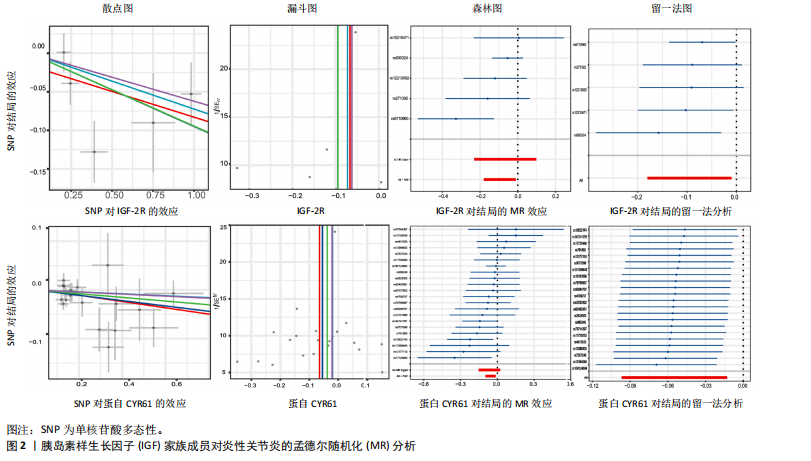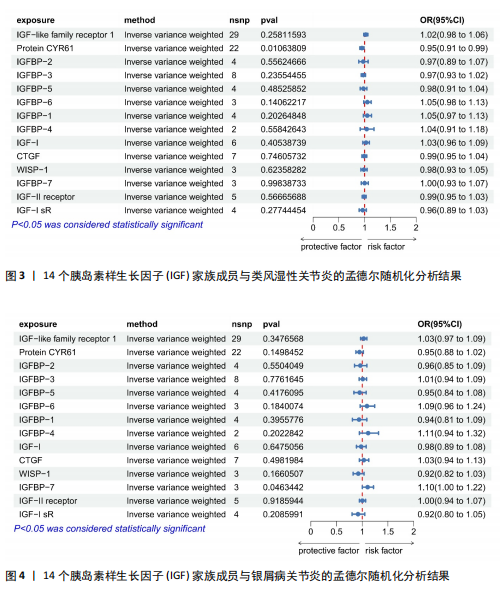[1] SCHER JU, UBEDA C, ARTACHO A, et al. Decreased bacterial diversity characterizes the altered gut microbiota in patients with psoriatic arthritis, resembling dysbiosis in inflammatory bowel disease. Arthritis Rheumatol. 2015;67(1):128-139.
[2] ZHANG X, ZHANG D, JIA H, et al. The oral and gut microbiomes are perturbed in rheumatoid arthritis and partly normalized after treatment. Nat Med. 2015;21(8):895-905.
[3] GRACEY E, BURSSENS A, CAMBRÉ I, et al. Tendon and ligament mechanical loading in the pathogenesis of inflammatory arthritis. Nat Rev Rheumatol. 2020;16(4):193-207.
[4] RADNER H, RAMIRO S, BUCHBINDER R, et al. Pain management for inflammatory arthritis (rheumatoid arthritis, psoriatic arthritis, ankylosing spondylitis and other spondylarthritis) and gastrointestinal or liver comorbidity. Cochrane Database Syst Rev. 2012;1(1):CD008951.
[5] KEROLA AM, KAZEMI A, ROLLEFSTAD S, et al. All-cause and cause-specific mortality in rheumatoid arthritis, psoriatic arthritis and axial spondyloarthritis: a nationwide registry study. Rheumatology (Oxford). 2022;61(12):4656-4666.
[6] LEROITH D, HOLLY JMP, FORBES BE. Insulin-like growth factors: Ligands, binding proteins, and receptors. Mol Metab. 2021; 52:101245.
[7] KIM HS, NAGALLA SR, OH Y, et al. Identification of a family of low-affinity insulin-like growth factor binding proteins (IGFBPs): characterization of connective tissue growth factor as a member of the IGFBP superfamily. Proc Natl Acad Sci U S A. 1997;94(24):12981-12986.
[8] CLEMMONS DR. Role of IGF-binding proteins in regulating IGF responses to changes in metabolism. J Mol Endocrinol. 2018;61(1):T139-T169.
[9] MAZZIOTTI G, LANIA AG, CANALIS E. Skeletal disorders associated with the growth hormone-insulin-like growth factor 1 axis. Nat Rev Endocrinol. 2022;18(6):353-365.
[10] ABDI E, NAJAFIPOUR H, JOUKAR S, et al. Expression of IGF-1, IL-27 and IL-35 Receptors in Adjuvant Induced Rheumatoid Arthritis Model. Iran J Immunol. 2018;15(1): 14-27.
[11] RUAN X, JIN X, SUN F, et al. IGF signaling pathway in bone and cartilage development, homeostasis, and disease. FASEB J. 2024; 38(17):e70031.
[12] 李冬,董晓俊,徐成栋.IGF-1介导MAPKs通路在C3H10T1/2细胞成骨分化中的作用[J].中国骨质疏松杂志,2024,30(5):668-672.
[13] ERLANDSSON MC, TÖYRÄ SILFVERSWÄRD S, NADALI M, et al. IGF-1R signalling contributes to IL-6 production and T cell dependent inflammation in rheumatoid arthritis. Biochim Biophys Acta Mol Basis Dis. 2017;1863(9):2158-2170.
[14] ZUCCOLO L, HOLMES MV. Commentary: Mendelian randomization-inspired causal inference in the absence of genetic data. Int J Epidemiol. 2017;46(3):962-965.
[15] HEMANI G, ZHENG J, ELSWORTH B, et al. The MR-Base platform supports systematic causal inference across the human phenome. Elife. 2018;7:e34408.
[16] RICHMOND RC, DAVEY SMITH G. Mendelian Randomization: Concepts and Scope. Cold Spring Harb Perspect Med. 2022; 12(1):a040501.
[17] BURGESS S, BUTTERWORTH A, THOMPSON SG. Mendelian randomization analysis with multiple genetic variants using summarized data. Genet Epidemiol. 2013;37(7):658-665.
[18] SKRIVANKOVA VW, RICHMOND RC, WOOLF BAR, et al. Strengthening the reporting of observational studies in epidemiology using mendelian randomisation (STROBE-MR): explanation and elaboration. BMJ. 2021;375:n2233.
[19] SUHRE K, ARNOLD M, BHAGWAT AM, et al. Connecting genetic risk to disease end points through the human blood plasma proteome. Nat Commun. 2017;8:14357.
[20] SUN BB, MARANVILLE JC, PETERS JE, et al. Genomic atlas of the human plasma proteome. Nature. 2018;558(7708):73-79.
[21] DEMONTIS D, WALTERS RK, MARTIN J, et al. Discovery of the first genome-wide significant risk loci for attention deficit/hyperactivity disorder. Nat Genet. 2019;51(1):63-75.
[22] GROVE J, RIPKE S, ALS TD, et al. Identification of common genetic risk variants for autism spectrum disorder. Nat Genet. 2019;51(3):431-444.
[23] YU D, SUL JH, TSETSOS F, et al. Interrogating the Genetic Determinants of Tourette’s Syndrome and Other Tic Disorders Through Genome-Wide Association Studies. Am J Psychiatry. 2019;176(3):217-227.
[24] DIDELEZ V, SHEEHAN N. Mendelian randomization as an instrumental variable approach to causal inference. Stat Methods Med Res. 2007;16(4):309-330.
[25] SYVÄNEN AC. Toward genome-wide SNP genotyping. Nat Genet. 2005;37 Suppl:S5-10.
[26] BURGESS S, THOMPSON SG, CRP CHD GENETICS COLLABORATION. Avoiding bias from weak instruments in Mendelian randomization studies. Int J Epidemiol. 2011;40(3):755-764.
[27] BOWDEN J, DEL GRECO MF, MINELLI C, et al. Improving the accuracy of two-sample summary-data Mendelian randomization: moving beyond the NOME assumption. Int J Epidemiol. 2019;48(3):728-742.
[28] SLOB EAW, BURGESS S. A comparison of robust Mendelian randomization methods using summary data. Genet Epidemiol. 2020;44(4):313-329.
[29] BOWDEN J, DAVEY SMITH G, HAYCOCK PC, et al. Consistent Estimation in Mendelian Randomization with Some Invalid Instruments Using a Weighted Median Estimator. Genet Epidemiol. 2016; 40(4):304-314.
[30] BOWDEN J, DAVEY SMITH G, BURGESS S. Mendelian randomization with invalid instruments: effect estimation and bias detection through Egger regression. Int J Epidemiol. 2015;44(2):512-525.
[31] BURGESS S, FOLEY CN, ALLARA E, et al. A robust and efficient method for Mendelian randomization with hundreds of genetic variants. Nat Commun. 2020;11(1):376.
[32] HARTWIG FP, DAVEY SMITH G, BOWDEN J. Robust inference in summary data Mendelian randomization via the zero modal pleiotropy assumption. Int J Epidemiol. 2017;46(6):1985-1998.
[33] BURGESS S, THOMPSON SG. Interpreting findings from Mendelian randomization using the MR-Egger method. Eur J Epidemiol. 2017;32(5):377-389.
[34] GRECO M FD, MINELLI C, SHEEHAN NA, et al. Detecting pleiotropy in Mendelian randomisation studies with summary data and a continuous outcome. Stat Med. 2015; 34(21):2926-2940.
[35] MOONESI M, ZAKA KHOSRAVI S, MOLAEI RAMSHE S, et al. IGF family effects on development, stability, and treatment of hematological malignancies. J Cell Physiol. 2021;236(6):4097-4105.
[36] KASPRZAK A, KWASNIEWSKI W, ADAMEK A, et al. Insulin-like growth factor (IGF) axis in cancerogenesis. Mutat Res Rev Mutat Res. 2017;772:78-104.
[37] STUARD WL, TITONE R, ROBERTSON DM. The IGF/Insulin-IGFBP Axis in Corneal Development, Wound Healing, and Disease. Front Endocrinol (Lausanne). 2020;11:24.
[38] 陈城. IL-1β、IL-4、IGF-1、IL-10在人膝骨关节炎关节软骨中的表达及意义[D].呼和浩特:内蒙古医科大学,2024.
[39] WEN C, XU L, XU X, et al. Insulin-like growth factor-1 in articular cartilage repair for osteoarthritis treatment. Arthritis Res Ther. 2021;23(1):277.
[40] WON JH, CHOI JS, JUN JI. CCN1 interacts with integrins to regulate intestinal stem cell proliferation and differentiation. Nat Commun. 2022;13(1):3117.
[41] ZHU Y, ALMUNTASHIRI S, HAN Y, et al. The Roles of CCN1/CYR61 in Pulmonary Diseases. Int J Mol Sci. 2020;21(21):7810.
[42] LAU LF. CCN1/CYR61: the very model of a modern matricellular protein. Cell Mol Life Sci. 2011;68(19):3149-3163.
[43] MACDONALD IJ, HUANG CC, LIU SC, et al. Targeting CCN Proteins in Rheumatoid Arthritis and Osteoarthritis. Int J Mol Sci. 2021;22(9):4340.
[44] MIDDLETON J, ARNOTT N, WALSH S, et al. Osteoblasts and osteoclasts in adult human osteophyte tissue express the mRNAs for insulin-like growth factors I and II and the type 1 IGF receptor. Bone. 1995;16(3):287-293.
[45] FAN Y, YANG X, ZHAO J, et al. Cysteine-rich 61 (Cyr61): a biomarker reflecting disease activity in rheumatoid arthritis. Arthritis Res Ther. 2019;21(1):123.
[46] CHOI C, JEONG W, GHANG B, et al. Cyr61 synthesis is induced by interleukin-6 and promotes migration and invasion of fibroblast-like synoviocytes in rheumatoid arthritis. Arthritis Res Ther. 2020;22(1):275.
[47] BRIGSTOCK DR, GOLDSCHMEDING R, KATSUBE KI, et al. Proposal for a unified CCN nomenclature. Mol Pathol. 2003;56(2): 127-128.
[48] LIU F, YU T, LIU J, et al. IGFBP-7 secreted by adipose-derived stem cells inhibits keloid formation via the BRAF/MEK/ERK signaling pathway. J Dermatol Sci. 2023;111(1):10-19.
|



